Just a few months ago, when the 2016 MotoGP season started, not too many people would have bet on Marc Marquez being championship leader at midseason. Yet despite technical problems on a bike that was “born wrong,” he has managed to minimize the damage and finish off the podium only once, even winning three races. The result is the young Spaniard heading into the summer break with a very healthy 48-point lead in the championship.
So what was the magic bullet that has allowed him to do so well? “Well it’s difficult to find just one reason why I’m leading despite the problems we had with the bike,” answered Marquez, “because I haven’t won the most races, nor have I been the fastest in all of the sessions. But perhaps you could say that I’m leading because I’ve been the most consistent. It’s never been like this! But yeah, my consistency has allowed me to lead the championship at this moment.”
Consistency? Coming from a confessed “win it or bin it” rider, who approached every weekend as if it was the season finale? After the fiasco of last season, when a string of crashes in the first part of the year ruined his title hopes, has Marquez learned to ride more carefully? “I wouldn’t say careful”, he corrected. “It’s a word that doesn’t fit what has happened. For example, in Holland I risked a lot. Not through the whole race, but at certain moments. And if I had crashed in those moments, which is easy to do in the rain, I would have screwed the weekend up.”
Marquez admits that racing with his head and not his heart hasn’t been easy for him. In fact, the only race in which he admits to have forgotten the championship and raced just “for fun” was in Mugello, where he battled with Lorenzo to the finish line. “Yes, I’d say at Mugello I risked the most this year. In Montmeló (Catalunya) too, up until the final two laps, when I said, ‘Ok, enough! If you continue like this, you’ll crash.’ But in Montmeló I saved many risky moments. In those two races – Mugello and Montmeló – I saw how much I could risk, and in Holland I was feeling good enough in the dry to risk a little. But in the end the conditions were what they were.”
Racing to salvage points isn’t nearly as exciting as doing it with the target of winning. Marquez admits those races “never seem to end; some end up being very long.” In the Dutch GP, for example, he fought against his racing DNA when he voluntarily gave up the fight for the victory with Jack Miller. Therefore, he celebrated his second position as a victory: he had managed to neutralize his instinct. “Yes it’s true, because it was a race in which I suffered a lot. You know that when you’re riding in the dry there are three places on the circuit where you have to be careful. But when it’s raining you have to be careful everywhere, in every corner, and this makes you ride with a lot of mental tension, which is really tiring. In the dry you get tired but it’s more physical, whereas in the wet you feel mentally fatigued. The night after Assen I went to sleep super early because, psychologically, the race was exhausting.”
The 2016 RC213V is partially responsible for the change to Marquez. The engine he ended up choosing during preseason for the 2016 version ended up not working well with the compulsory electronics introduced this season. In fact, during our conversation Marquez admitted that the spec ECU at the beginning of the season was only working at about 30 percent of the capability of the proprietary HRC electronics they’d used previously.
“Yeah, but the current electronics aren’t so bad, because now, it is very close to what we had before,” countered Marquez. “I would say that now we are at around 85 or 90. The problem is that other manufacturers are currently working at 100, especially Ducati. We’ve definitely lost acceleration, but I’m convinced that this isn’t just the engine. It’s also the electronics. Last year we were already losing in acceleration, but this year, with the new electronics, it’s even more.
“This preseason there was one track, Phillip Island, where we were at the front. But it’s also true that Phillip Island is a circuit where the electronics have less impact, because of the long corners taken in third or fourth gear. Sure, the electronics have an influence – they always do – but not so much. The traction control, for example, doesn’t cut in a lot. But when we tested the electronics at Jerez in November, [Scott] Redding, [Danilo] Petrucci, [Hector] Barbera and the others were ahead of us. In February we went to Malaysia and we were eighth or ninth. We were still behind.”
Until this season, Honda was the only manufacturer with forward-rotating-crankshaft engines; a configuration that guaranteed more power. So why did HRC change to the counter-rotating crankshaft?
“With our new engine configuration our engineers were looking to be a little more efficient in acceleration, so you wheelie less”, explained Marquez when asked about the switch. “Because in theory an engine with these characteristics wheelies less, but in the end it hasn’t been so different in this aspect. Also in fast corners: in theory the bike should go through them better. In Mugello, Montmeló, Qatar, Phillip Island and these kind of circuits we were suffering a lot, and now we are closer through these fast corners. But on the flip side, the bike doesn’t stop as well. Our previous bike was maybe great at one circuit but suffers a lot at another; in this we (still) suffer, but the peaks and valleys between circuits are not so big (like before).”
And what about the Michelin tires? Having been considered the specialist at squeezing the most out of the Bridgestone front tire in every braking zone, how much has Marquez to retrain himself?
“A lot,” admitted the two-time MotoGP World Champion. “I’ve had to retrain myself a lot, mostly in preseason. Now, the front has got closer to the Bridgestone. It isn’t the same, but it allows you to brake late, with confidence, although you still have some moments that you don’t understand. For example, in free practice in Holland, when I was accelerating in a straight line. It was strange [for the front to tuck] there. It’s normal that something occasionally happens. Normally it doesn’t, but whether you like it or not, you lose confidence in these moments. Especially when overtaking, because with the Bridgestone you would say, ‘Meh, a little more and the tire will hold.’ With this it’s a little more and… The limit is smaller, and narrower. With Bridgestone you had moments but normally you would save them. With Michelin, if you have a moment, 90 percent of the time you crash.”
So what about his teammate Dani Pedrosa's accusations that the problems the team is suffering now are because of Marquez? "I didn't give them much importance," dismissed Marquez. "He knows that Honda took both of us to test the new bike in Jerez. In the end, you may have certain feelings, but what guides Honda is the lap time. And on this occasion, both my fastest time and his were with this new engine. It's true that this bike is a little heavier, and it's a little more difficult to ride; it was a little bit more tiring. Maybe for his riding style the other engine would have been better. But I'll say it again: If you have two riders and both are faster with one bike than the other, and I was the faster of the two, the comments of the rider who has been quicker carry more weight. And the fastest rider at the time was I. So my comments were more important."
So why did Pedrosa make such accusations? “I’m not sure. I think he’s had good races. But although he’s doing things well and is giving 100 percent, the results haven’t come. He could have felt a little cornered and made these comments that in a less emotional moment he wouldn’t have said them.”
And finally, did he believe Valentino Rossi was sincere in his handshake in parc ferme after the race at Catalunya? “Yeah, I believe in it”, said Marquez. “In this moment in Montmeló everything was very raw, and after the race when he beat me, we glanced at each other and it was almost like a reflex. I think that when this happens, it’s what you feel. In the future you may call me a fool, or not (laughs), but I believe it. I would have done it a lot earlier but it came at this moment. And it’s good that it happened for the championship. I’m not going to tell you that we’re friends, but at least there’s a professional relationship, which is the minimum of what’s needed. Not only with Valentino, but each rider on the grid.
“Before the situation was uncomfortable, not just for the both of us, but for all the press. Now it’s more comfortable. At the end of the day, you’re in your pit box, he’s in his box and nothing changes. But we’re all riders and we’re playing and fighting on the track. There has to be a cordial relationship—although after, on track, it’s total battle!”










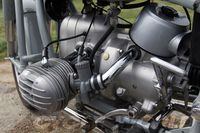
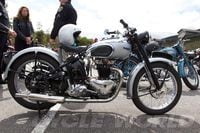
/cloudfront-us-east-1.images.arcpublishing.com/octane/K4UZWGCVTKRIRIJ4WTG2JJE5NU.jpg)
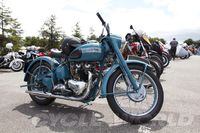

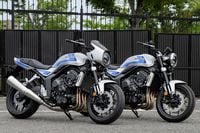

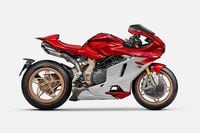
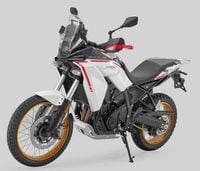
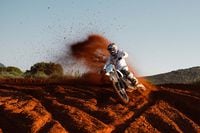
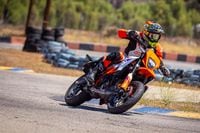
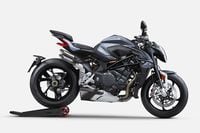
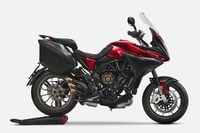
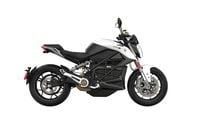
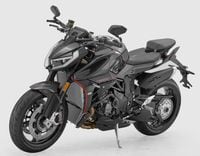




/cloudfront-us-east-1.images.arcpublishing.com/octane/URQMNYZZ6ZBM5LXGREBV3Y72OM.jpg)
/cloudfront-us-east-1.images.arcpublishing.com/octane/XH2ETEU4NVGDFNQO2XT2QQS5LU.jpg)
/cloudfront-us-east-1.images.arcpublishing.com/octane/DUGAQC2GQJCXFILEECQK2Q6T7I.jpg)
/cloudfront-us-east-1.images.arcpublishing.com/octane/4OGCCVR7WZGYDOWK4CGDTHXITA.jpg)
/cloudfront-us-east-1.images.arcpublishing.com/octane/GQV7Y6XT6FGZDIXO4P2IVJNSYE.jpg)
/cloudfront-us-east-1.images.arcpublishing.com/octane/X47GL62AXNALRHQLLBELY5WRMY.jpg)
/cloudfront-us-east-1.images.arcpublishing.com/octane/7OY2GP3FWFEDVEMDSLNGM6PZRM.jpg)
/cloudfront-us-east-1.images.arcpublishing.com/octane/Y3XYCFONBBBAHN6BWJDTWDY3FE.jpg)
/cloudfront-us-east-1.images.arcpublishing.com/octane/P3DLTISFGJA43L5QXVH7365UNY.jpg)
/cloudfront-us-east-1.images.arcpublishing.com/octane/H6FFG4YQMREO3DTADIJMECNS7Y.jpg)